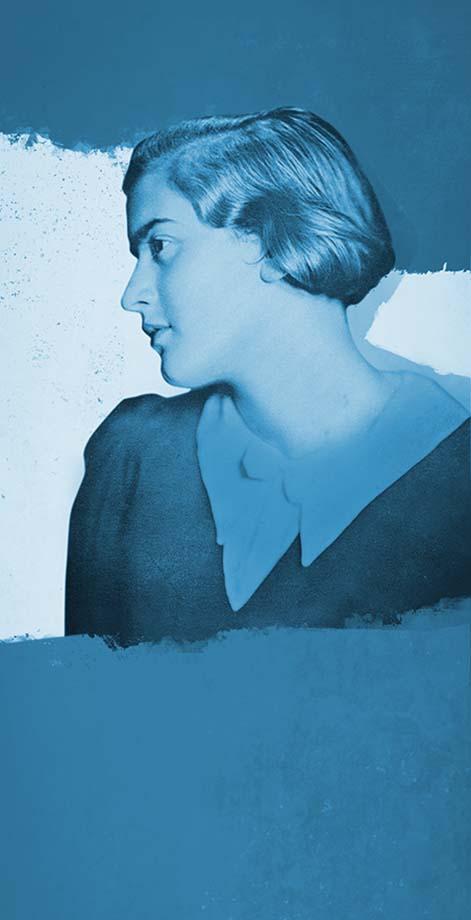
10 XI 1920, Vienna — 1 XII 1942, KL Auschwitz-Birkenau
Ruth Maier wrote letters and diaries in German, describing her war experiences in Austria and Norway. Her writings and watercolors were discovered in the 1990s and first published in 2007, and these have been integrated into Norway’s documentary Heritage, a part of UNESCO’s Memory of the World.
She was born on 10 November 1920 in Vienna to an assimilated Jewish family. Her father held a senior position in the Austrian postal and telegraph service. Thanks to his contacts, Ruth managed to find refuge in Norway in 1939. She quickly learned Norwegian and befriended Gunvor Hofmo, a promising Norwegian poet. Ruth Maier was also a model who posed for the renowned sculptor Gustav Vigeland. She maintained contact with her sister, Judith, who managed to flee to England. Despite the distance and difficult circumstances, the sisters kept in touch with each other, regularly writing letters.
On 26 November 1942, Ruth Maier was arrested by the Norwegian police and on the same day boarded the SS Donau cargo ship, headed for Nazi Germany. She arrived at the Auschwitz-Birkenau concentration camp on 1 December and was immediately sent to the gas chamber.
Gunvor Hofmo kept her correspondence with Ruth, as well as the diaries Ruth wrote in Vienna and Oslo in the years 1933 -1942. The Norwegian poet attempted to publish Ruth’s writings during her lifetime, but to no avail. Gunvor Hofmo’s wish was first realized after her death when the texts were edited by the Norwegian poet, Jan Erik Vold, and ultimately published in 2007, along with letters written by Ruth to Judith. Ruth Maier’s writings tell the story of the deteriorating living conditions of the Jewish community, and contain her reflections on isolation, alienation, and identity. The texts are a moving testimony left by a young woman who deeply missed her family. Readers and critics have appreciated the high artistic level of Ruth Maier’s writings. In 2020, Ruth was commemorated in various Norwegian cities and her works have been incorporated into Norway’s documentary heritage, a part of UNESCO’s Memory of the World.